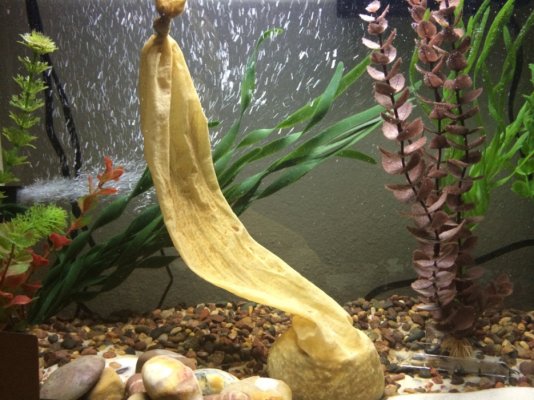trennamw
Aquarium Advice Addict
... What would you do?
I ask because our LFS was saying "Wow your water is soft even for Portland" and that I'm "pretty much gonna have to do what RO users do", and I prefer to gather lots of info and opinions before I buy any (more) water treatment stuff.
I knew I had "extremely soft" water, but today I used distilled water to dilute things down and get a more accurate reading. At this point I know it's 0.1 degrees each GH and KH, if not less.
I'm cycling a 29 gallon and am not extremely confident I have a good plan for water quality, and particularly water changes. Especially as i learn more about osmotic stress and TDS.
I have reached some stability with a 3 gallon Betta tank but I still don't know what is making that work, and whether I'm handling water changes well.
Using acid & alkaline buffers led to wild swings, so I followed a suggestion to use Cichlid salts & buffer in a smaller dose. I still was getting big swings in KH and therefore pH. So the LFS who'd agreed the Ciclid products were a good first step suggested some coral. A handful of that stabilized the betta tank.
Since I don't understand it all well, when I change the water in the betta tank I add some of the Ciclid products, and I stick a tiny bit of coral in that jug and shake it all. Because it's a small amount of water and chemicals can get dangerous, before I pour it in I test the tank and the new water for matching pH, GH, and KH (don't have a TDS meter yet). He does get a touch of salt too; the time I tried to go without it he seemed unhappy and the fin rot began again.
But now it's a big tank and I'm pretty nervous. I keep seeing instructions to add the new water to the tank and then add whatever buffer to it. But for people using RO water, would you take half the tank water out, put in RO water, then dose it?
Or am I just going to have to keep Discus instead? LOL
(The sketch at this point is having danios, dwarf versions of Pencilfish Cories and loaches, pristella, and sparkling gourami).
I ask because our LFS was saying "Wow your water is soft even for Portland" and that I'm "pretty much gonna have to do what RO users do", and I prefer to gather lots of info and opinions before I buy any (more) water treatment stuff.
I knew I had "extremely soft" water, but today I used distilled water to dilute things down and get a more accurate reading. At this point I know it's 0.1 degrees each GH and KH, if not less.
I'm cycling a 29 gallon and am not extremely confident I have a good plan for water quality, and particularly water changes. Especially as i learn more about osmotic stress and TDS.
I have reached some stability with a 3 gallon Betta tank but I still don't know what is making that work, and whether I'm handling water changes well.
Using acid & alkaline buffers led to wild swings, so I followed a suggestion to use Cichlid salts & buffer in a smaller dose. I still was getting big swings in KH and therefore pH. So the LFS who'd agreed the Ciclid products were a good first step suggested some coral. A handful of that stabilized the betta tank.
Since I don't understand it all well, when I change the water in the betta tank I add some of the Ciclid products, and I stick a tiny bit of coral in that jug and shake it all. Because it's a small amount of water and chemicals can get dangerous, before I pour it in I test the tank and the new water for matching pH, GH, and KH (don't have a TDS meter yet). He does get a touch of salt too; the time I tried to go without it he seemed unhappy and the fin rot began again.
But now it's a big tank and I'm pretty nervous. I keep seeing instructions to add the new water to the tank and then add whatever buffer to it. But for people using RO water, would you take half the tank water out, put in RO water, then dose it?
Or am I just going to have to keep Discus instead? LOL
(The sketch at this point is having danios, dwarf versions of Pencilfish Cories and loaches, pristella, and sparkling gourami).

